The vast and untamed wilderness of Northern Australia harbors a treasure trove of unique and often elusive wildlife that have adapted to some of the most extreme and diverse environments on Earth. From the lush rainforests of Queensland to the arid deserts of the Northern Territory, this region is a biological hotspot unlike any other. In this article, we embark on a journey into the heart of this enigmatic ecosystem, shedding light on the fascinating world of Northern Australian animals.
Northern Australia boasts an extraordinary diversity of species, many of which are found nowhere else on the planet. These creatures have evolved ingenious strategies for survival in the face of soaring temperatures, monsoonal rains, and ever-changing landscapes.
From the iconic saltwater crocodile, the world’s largest living reptile, to the agile wallabies and vibrant birdlife that grace the wetlands, we will delve into the lives, habits, and the crucial role these creatures play in maintaining the ecological balance of this remarkable region. Join us as we uncover the secrets and mysteries of Northern Australian animals, revealing the true wonders of this remote and captivating world.
Northern Australian Ecosystems:
The ecosystems of Northern Australia are nothing short of awe-inspiring. This region encompasses a vast array of habitats, from the dense and ancient rainforests of the Wet Tropics to the sun-baked deserts of the Red Centre. The northern coastline is adorned with mangroves and pristine beaches, while the interior boasts sprawling savannahs and dramatic escarpments.
These diverse environments are home to a rich tapestry of life, including species that have evolved over millennia to adapt to the unique challenges posed by this rugged terrain. The interconnectedness of these ecosystems is essential for the survival of many species, making Northern
Australia a global hotspot for biodiversity. Exploring the intricate web of life in this region reveals the complex relationships between plants, animals, and the environment, highlighting the urgency of conservation efforts to protect these invaluable ecosystems.
1. Saltwater Crocodile (Crocodylus porosus):
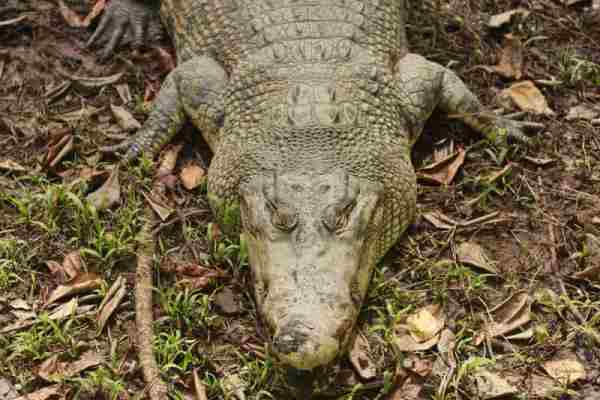
The saltwater crocodile, often called the “salty,” is the largest living reptile on Earth. With powerful jaws and a prehistoric appearance, these apex predators dominate Northern Australia’s waterways. They can grow over 20 feet in length and are known for their incredible strength and stealth.
Saltwater crocodiles are equally at home in freshwater rivers and saltwater estuaries, making them formidable hunters. They’re a symbol of the region’s wildness and a reminder to always exercise caution around Northern Australia’s water bodies.
2. Kangaroo (Various species, including Agile Wallaby and Red Kangaroo):
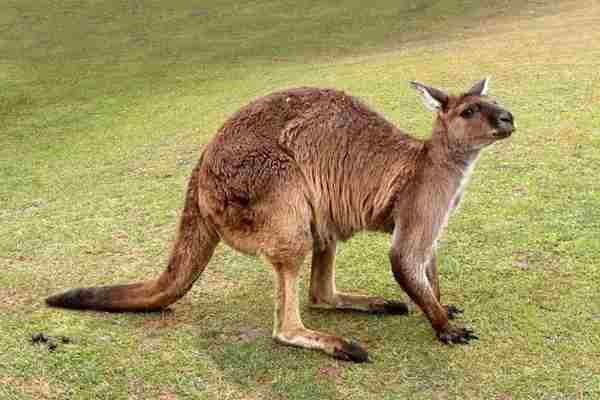
Kangaroos, the iconic marsupials of Australia, are emblematic of the country’s unique wildlife. Northern Australia is home to various kangaroo species, including the agile wallaby and the formidable red kangaroo, the largest marsupial in the world. These herbivores are adapted to the region’s arid landscapes, using their powerful hind legs to hop across vast distances in search of food and water. Kangaroos are a testament to the resilience of Australia’s wildlife in the face of challenging conditions.
3. Koala (Phascolarctos cinereus):
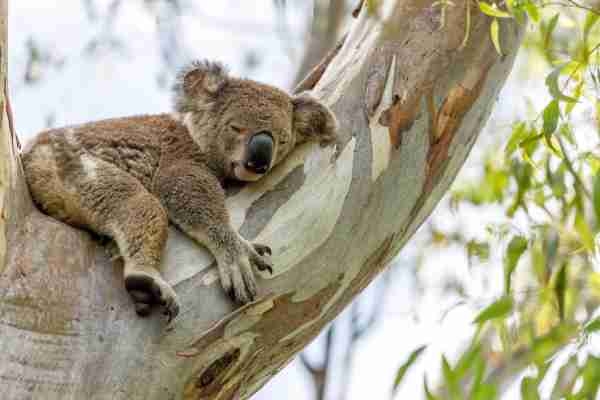
Koalas, often called “koala bears” (though they are not bears), are marsupials renowned for their cuddly appearance and eucalyptus diet. In Northern Australia’s eucalyptus forests, these arboreal creatures spend most of their lives perched in trees. Koalas are known for their docile nature and distinctive vocalizations. They’ve become symbols of conservation efforts due to habitat loss and threats from disease. Northern Australia is one of the regions where conservationists work tirelessly to protect these iconic marsupials.
4. Emu (Dromaius novaehollandiae):
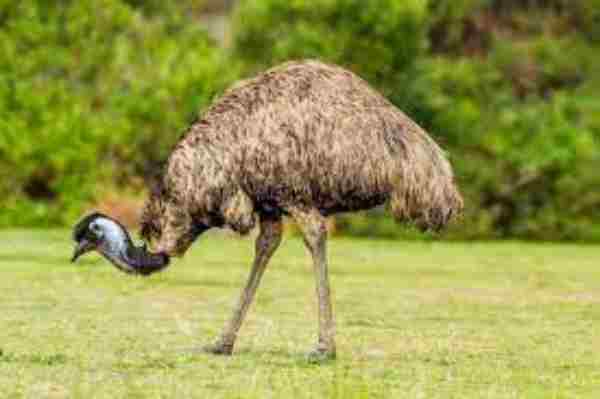
The emu, Australia’s largest bird and second-largest in the world, is a flightless marvel of Northern Australia’s arid landscapes. These birds are known for their long legs, which enable them to sprint at impressive speeds, and their striking, elusive presence in the outback. Emus are herbivores, primarily feeding on plants and insects. Their adaptability to the harsh environments of Northern Australia is a testament to their resilience, and they hold cultural significance for Indigenous Australian communities.
5. Platypus (Ornithorhynchus anatinus):
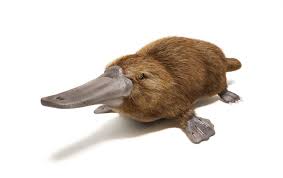
The platypus, a highly unique and elusive monotreme, is native to Northern Australia’s freshwater rivers and streams. Known for its peculiar appearance, including a duck-like bill and webbed feet, it’s one of only a few egg-laying mammals in the world. Platypuses are excellent swimmers, using electrolocation to detect prey underwater. These semi-aquatic creatures are both an enigmatic wonder and a symbol of the region’s biodiversity.
6. Frilled Neck Lizard (Chlamydosaurus kingii):

The frilled neck lizard is a remarkable reptile found throughout Northern Australia’s woodlands and savannas. It derives its name from the large frill it extends around its neck when threatened, creating an intimidating display. These lizards are skilled climbers and hunters, primarily feeding on insects and small vertebrates. Their flamboyant appearance and unique defensive behavior make them a captivating part of Northern Australia’s reptile fauna.
7. Cassowary (Casuarius spp.):

The cassowary is a large, flightless bird found in the tropical rainforests of Northern Australia. Renowned for its striking blue skin and helmet-like casque, it is often considered the world’s most dangerous bird due to its powerful kicks. Cassowaries play a crucial role in seed dispersal within their ecosystems. They are also significant to Indigenous cultures, featuring in traditional stories and art.
8. Sugar Glider (Petaurus breviceps):

The sugar glider, a small marsupial, is known for its gliding ability, thanks to a membrane between its wrists and ankles. It inhabits Northern Australia’s woodlands and forests, where it feeds on nectar, sap, and insects. These nocturnal creatures are social and often found in family groups. Their endearing appearance and acrobatic gliding make them popular among wildlife enthusiasts.
9. Dingo (Canis lupus dingo):

The dingo, Australia’s native wild dog, is a versatile predator found across Northern Australia’s diverse landscapes. Dingoes come in various coat colors and exhibit pack behavior. They play an essential role in regulating native wildlife populations, and their presence is deeply intertwined with Indigenous Australian cultures.
10. Northern Quoll (Dasyurus hallucatus):

The northern quoll, a small carnivorous marsupial, inhabits the woodlands and savannas of Northern Australia. These pint-sized predators are known for their striking white spots on a brownish coat. Sadly, they are facing threats from habitat loss and introduced predators, highlighting the importance of conservation efforts to protect this unique marsupial.
11. Green Tree Python (Morelia viridis):

The green tree python is a non-venomous constrictor snake found in the rainforests of Northern Australia. Its striking green coloration and ability to coil around tree branches make it a master of camouflage and ambush hunting. Despite their vibrant appearance, these snakes are often difficult to spot in the dense canopy. They are an important part of Northern Australia’s rainforest ecosystem and are known for their unique hunting behavior.
12. Agile Antechinus (Antechinus agilis):

The agile antechinus is a small, insect-eating marsupial native to Northern Australia. These energetic creatures are known for their frenzied mating behavior, which often leads to the males dying shortly after the breeding season. They play a vital role in controlling insect populations and are a testament to the region’s remarkable marsupial diversity.
13. Estuarine Crocodile (Crocodylus porosus):

The estuarine crocodile, also known as the “salty,” is a massive apex predator that dominates the waters of Northern Australia. With a reputation as one of the most aggressive and dangerous crocodile species, it’s known to inhabit estuaries, rivers, and coastal areas. These ancient reptiles are a symbol of the region’s wildness and are a reminder of the need for caution in crocodile-prone areas.
14. Monitor Lizards (Various species, including the Lace Monitor and Sand Goanna):

Monitor lizards, including the impressive lace monitor and the formidable sand goanna, are a diverse group of reptiles found across Northern Australia. Known for their intelligence and opportunistic feeding habits, they are often seen scavenging and hunting for small prey. Their adaptability and diverse species make them a fascinating part of the region’s reptilian fauna.
15. Northern Hairy-nosed Wombat (Lasiorhinus krefftii):

The northern hairy-nosed wombat is a critically endangered marsupial known for its burrowing habits and distinctive, whiskered snout. These herbivores are found in limited numbers in Northern Australia, where conservation efforts are in place to protect their remaining populations. They are a unique and enigmatic member of Australia’s marsupial family.
16. Northern Brown Bandicoot (Isoodon macrourus):

The northern brown bandicoot, a small marsupial, is known for its long, pointed snout and omnivorous diet. These resilient creatures inhabit various habitats in Northern Australia, including woodlands and grasslands. They play a crucial role in ecosystem health by foraging on insects, plants, and small vertebrates, helping to maintain a balance in their local food web.
17. Mahogany Glider (Petaurus gracilis):

The mahogany glider is a critically endangered marsupial known for its striking mahogany-colored fur and large eyes. It is found in the tropical rainforests of Northern Australia and is primarily arboreal, gliding between trees with the help of a patagium, a membrane that stretches from wrist to ankle. Habitat loss and fragmentation threaten these charismatic marsupials, making conservation efforts vital for their survival.
18. Northern Blue-tongued Skink (Tiliqua scincoides intermedia):

The northern blue-tongued skink is a lizard characterized by its distinctive blue tongue and docile demeanor. These reptiles are often encountered in Northern Australia’s woodlands and gardens, where they feed on insects, fruits, and vegetation. Their conspicuous tongue serves as a defense mechanism, deterring potential predators. Blue-tongued skinks are a favorite among reptile enthusiasts and are admired for their gentle temperament.
19. Northern Bettong (Bettongia tropica):

The northern bettong, a small marsupial, is native to Northern Australia’s grasslands and woodlands. Recognized by their kangaroo-like hopping and pouches, bettongs play a crucial role in seed dispersal and soil health through their foraging habits. Like many other marsupials in the region, they face threats from habitat destruction and introduced predators, underscoring the importance of conservation efforts.
20. Northern Long-nosed Bandicoot (Perameles nasuta):

The northern long-nosed bandicoot is a small marsupial with a distinctive long snout and a love for digging. These nocturnal creatures are skilled foragers, feeding on insects and plant material. They are an essential part of Northern Australia’s ecosystems, contributing to soil aeration and seed dispersal. Conservation efforts aim to protect these bandicoots, which face challenges such as habitat loss and predation.
21. Rainbow Lorikeet (Trichoglossus haematodus):

The rainbow lorikeet is a brilliantly colored parrot found in Northern Australia’s tropical forests and woodlands. Their striking plumage, which includes a vibrant spectrum of colors, is a visual feast for birdwatchers and nature enthusiasts. Rainbow lorikeets are known for their playful and social behavior, often seen in flocks feeding on nectar, fruits, and pollen. Their cheerful presence and distinct calls make them a delightful and recognizable part of the region’s avian diversity.
22. Red-backed Fairywren (Malurus melanocephalus):

The red-backed fairywren is a small passerine bird inhabiting Northern Australia’s shrubby woodlands and grasslands. Males sport stunning breeding plumage with a striking red back and black crown. They are known for their intricate courtship displays and cooperative breeding behavior, where family members assist in raising chicks. These fairywrens are an example of Northern Australia’s unique avian fauna, captivating birdwatchers with their vibrant colors and fascinating social dynamics.
23. Northern Rosella (Platycercus venustus):

The northern rosella is a colorful parrot native to Northern Australia’s open woodlands and forests. They are known for their vibrant plumage, which includes a mix of red, yellow, and green. These omnivorous parrots feed on seeds, fruits, and insects, making them adaptable to various habitats. Northern rosellas add a splash of color to the region’s birdlife and are a testament to the diversity of parrot species in Australia.
24. Green Sea Turtle (Chelonia mydas):

The green sea turtle is one of the world’s largest species of sea turtles and is found in the coastal waters of Northern Australia. Named for the greenish color of its skin, these turtles are herbivores, primarily feeding on seagrasses and algae. They are an integral part of marine ecosystems and play a vital role in maintaining the health of seagrass beds. Conservation efforts aim to protect these graceful creatures from threats such as habitat degradation and bycatch.
25. Hawksbill Turtle (Eretmochelys imbricata):

The hawksbill turtle, with its distinctive beak-like jaws, is another sea turtle species found in Northern Australia’s coastal waters. These turtles are known for their stunningly patterned shells and are critically endangered due to habitat loss and poaching. Hawksbill turtles are important to marine ecosystems as they feed on sponges, helping to maintain coral reef health. Conservation initiatives are crucial for the survival of this iconic species.
Conservation Efforts and Challenges:
Conserving the unique and fragile ecosystems of Northern Australia presents both an opportunity and a challenge. While efforts are underway to protect and preserve the region’s biodiversity, they are not without hurdles. Invasive species, habitat loss due to land development, and the impacts of climate change are significant threats to native wildlife. Conservation organizations, Indigenous communities, and government agencies are working collaboratively to address these challenges. Indigenous land management practices, with their deep knowledge of the land, are increasingly recognized as crucial for conservation success.
Moreover, innovative initiatives such as habitat restoration projects and wildlife monitoring programs are making strides in safeguarding threatened species. However, the road ahead is challenging, and continued commitment to conservation is vital to ensure that the unique Northern Australian ecosystems endure for generations to come.
Ecotourism and Wildlife Viewing:
Northern Australia’s awe-inspiring landscapes and remarkable wildlife have attracted ecotourists and wildlife enthusiasts from around the globe. The opportunity to witness iconic creatures like kangaroos, koalas, and saltwater crocodiles in their natural habitats is a draw for nature lovers.
Ecotourism not only provides economic benefits to local communities but also raises awareness about the importance of conservation. Responsible ecotourism ensures that tourism activities are conducted in a sustainable manner, minimizing disturbance to the environment and wildlife.
Visitors can partake in guided tours, birdwatching, or embark on wilderness adventures that offer a deeper connection to Northern Australia’s natural wonders. However, striking a balance between tourism and conservation is crucial, as unregulated tourism can pose a threat to fragile ecosystems. Sustainable practices and education are essential to ensure that ecotourism contributes positively to the protection of Northern Australian wildlife.
Final Words:
Northern Australia is a natural wonderland teeming with unique and diverse wildlife, nestled within breathtaking landscapes. It is a region of global significance, not only for its incredible biodiversity but also for the delicate balance that sustains these ecosystems. The efforts to conserve this pristine environment and its inhabitants are vital in the face of increasing challenges.
By recognizing the importance of indigenous knowledge, implementing conservation strategies, and promoting responsible ecotourism, we can help ensure that Northern Australia’s natural treasures endure for generations to come. As we explore and appreciate the wonders of this remote and captivating world, let us remember our responsibility to protect and cherish the irreplaceable beauty of Northern Australian ecosystems and the animals that call them home.
Reference:
- https://www.natureaustralia.org.au/what-we-do/our-priorities/wildlife/wildlife-stories/unique-animals-of-northern-australia/
- https://www.natureaustralia.org.au/what-we-do/our-priorities/wildlife/wildlife-stories/10-weird-and-wonderful-wildlife-of-australia/
- https://gdayparks.com.au/articles/10-famous-australian-animals-and-where-to-see-them

Rahul M Suresh
Visiting the Zoo can be an exciting and educational experience for all involved. As a guide, I have the privilege of helping students and visitors alike to appreciate these animals in their natural habitat as well as introducing them to the various aspects of zoo life. I provide detailed information about the individual animals and their habitats, giving visitors an opportunity to understand each one more fully and appreciate them in a more intimate way.









